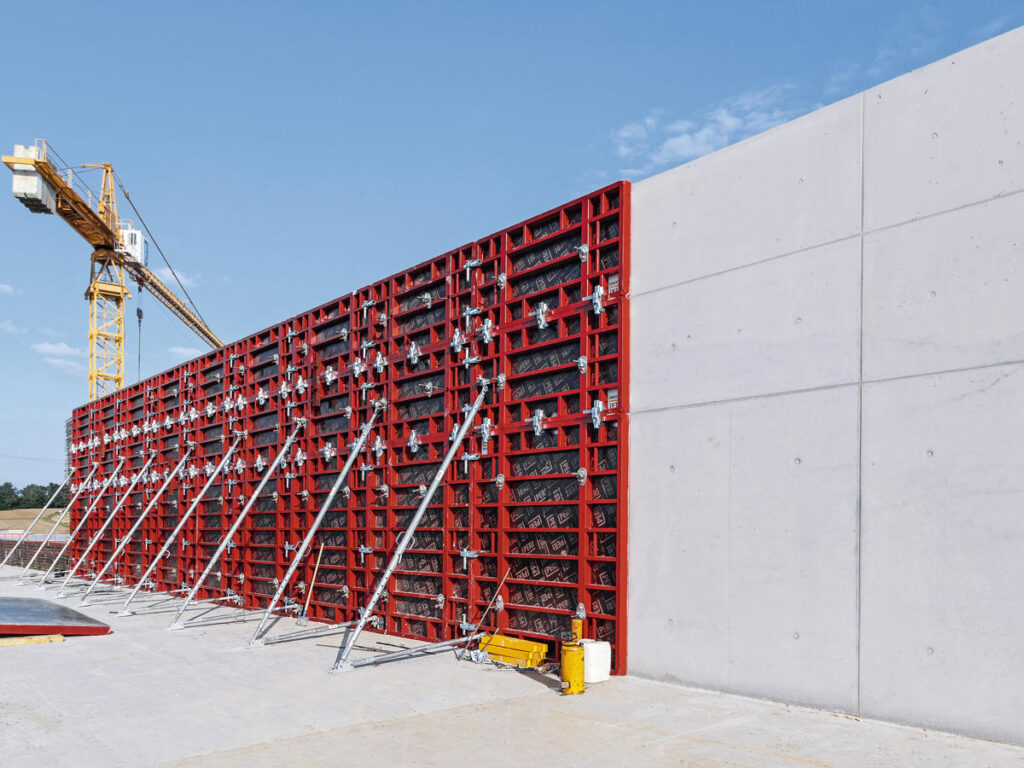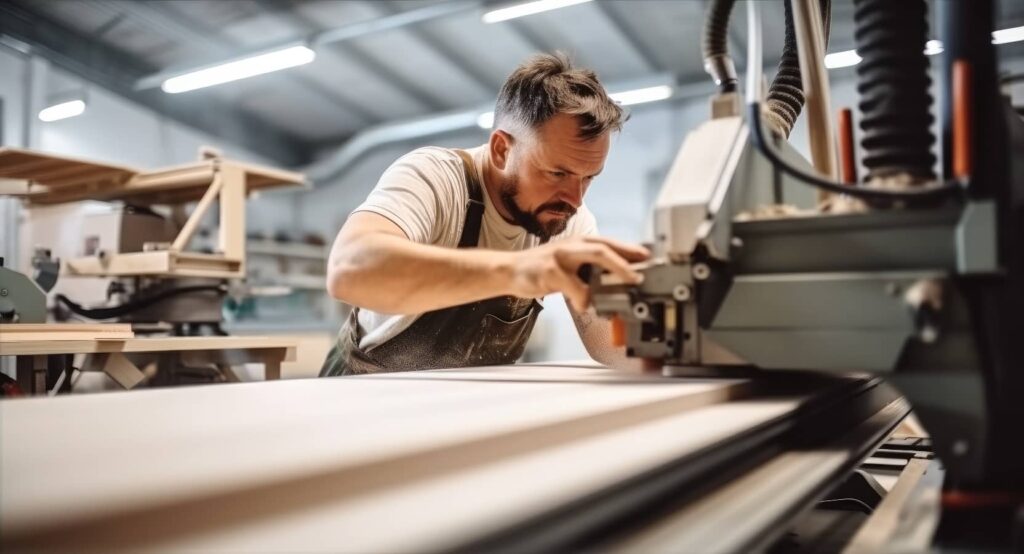Formwork plywood plays a crucial role in the construction industry, providing support and structure for concrete during the casting and setting process. Over the years, advancements in technology have revolutionized the way formwork plywood is designed, manufactured, and used. Understanding these trends is key to staying ahead in the ever-evolving construction industry.
Understanding Formwork Plywood Technology
Formwork plywood, also known as F17 grade plywood, is an engineered wood product specifically designed for use in construction formwork systems. It is made by bonding together multiple layers of wood veneers using powerful adhesives. This process creates a strong and durable material capable of withstanding the rigors of the concrete pouring process.
Technological advancements have enhanced the properties and performance of formwork plywood. Today, manufacturers utilize advanced wood treatments, such as acetylation or phenolic resins, to improve the material’s resistance to moisture, decay, and pests. These innovations help extend the lifespan of formwork plywood, reducing overall construction costs.
The Basics of Formwork Plywood
Formwork plywood comes in various grades, dimensions, and finishes, catering to different construction requirements. The most common types include film-faced plywood, which features a phenolic film overlay to protect against moisture and provide a smooth casting surface. Other types, such as phenolic film-coated plywood, offer enhanced resistance to abrasion and mechanical damage.

Formwork plywood panels are typically lightweight, making them easy to handle and assemble on construction sites. They are designed to be reusable, ensuring cost-effectiveness and sustainability in the long run. To ensure the panels’ longevity, manufacturers often incorporate special coatings or edge sealing to prevent water penetration and reduce swelling. Click here to troubleshooting common issues with formwork plywood.
Technological Advancements in Formwork Plywood
In recent years, technology has driven significant advancements in formwork plywood. One notable development is the integration of sensor technology and data analytics into formwork systems. Smart formwork plywood panels equipped with sensors can provide real-time feedback on factors like temperature, moisture levels, and pressure, allowing construction teams to monitor and optimize the concrete curing process.
Additionally, innovative manufacturing techniques, such as automated production lines and robotics, have improved the consistency and precision of formwork plywood manufacturing. This ensures that each panel meets strict quality standards, reducing the risk of structural defects and improving overall construction efficiency.
Furthermore, ongoing research and development in the field of formwork plywood technology have led to the exploration of new materials and construction methods. For instance, some researchers are investigating the use of sustainable alternatives to traditional wood veneers, such as bamboo or recycled materials. These alternative materials offer the potential for increased sustainability and reduced environmental impact in the construction industry.
Moreover, formwork plywood technology is not limited to traditional construction practices. With the rise of modular and prefabricated construction methods, formwork plywood has found new applications. It is now being used to create formwork systems for off-site construction, where entire building components are manufactured in a controlled factory environment and then transported to the construction site for assembly. This approach offers benefits such as improved quality control, reduced construction time, and minimized on-site waste.
In conclusion, formwork plywood technology continues to evolve and adapt to the changing needs of the construction industry. Through advancements in materials, manufacturing techniques, and the integration of smart technologies, formwork plywood has become an essential component in modern construction projects. Its durability, versatility, and cost-effectiveness make it a valuable asset for builders and contractors worldwide.
Emerging Trends in Formwork Plywood Technology
As we look to the future, several emerging trends are set to shape the formwork plywood industry.
Formwork plywood technology is on the brink of a revolutionary transformation, driven by innovative advancements and cutting-edge solutions. These developments are not only enhancing the efficiency and safety of construction processes but also paving the way for sustainable practices that prioritize environmental conservation and resource optimization.
The Role of AI and Robotics
Artificial Intelligence (AI) and robotics are expected to play a significant role in formwork plywood technology. AI-driven systems can analyze complex construction data and provide valuable insights for optimizing formwork designs, improving safety, and increasing efficiency. Robotic technologies, on the other hand, can automate repetitive and labor-intensive formwork tasks, reducing human error and enhancing productivity on construction sites.
Furthermore, the integration of AI and robotics in formwork plywood technology is not just a futuristic concept but a practical solution that is already revolutionizing the industry. From automated formwork assembly to real-time monitoring of structural integrity, these technologies are reshaping the way formwork plywood is utilized in construction projects, setting new standards for precision and performance.
Sustainable and Eco-friendly Practices
The construction industry is increasingly embracing sustainable and eco-friendly practices, and formwork plywood technology is no exception. Manufacturers are exploring environmentally friendly alternatives to traditional adhesives and treatments, reducing the environmental impact of formwork plywood production. Additionally, the use of recycled or reclaimed wood fibers in formwork plywood is becoming more prevalent, further minimizing the industry’s carbon footprint.
Moreover, the shift towards sustainable practices in formwork plywood technology is not just a response to regulatory requirements but a strategic move towards creating a greener and more resilient construction sector. By prioritizing eco-friendly materials and production processes, stakeholders in the formwork plywood industry are not only reducing waste and emissions but also contributing to a more sustainable built environment for future generations.

The Impact of New Technologies on Formwork Plywood Use
As technology continues to advance, it brings several benefits and improvements to the utilization of formwork plywood.
In addition to the efficiency and productivity improvements that new technologies offer, there are also notable advancements in the sustainability of formwork plywood. With the integration of eco-friendly materials and manufacturing processes, modern formwork plywood solutions are designed to minimize environmental impact. This shift towards sustainability not only aligns with global efforts to reduce carbon footprints but also enhances the overall reputation of construction projects by promoting eco-conscious practices.
Efficiency and Productivity Improvements
New technologies streamline and expedite the formwork installation process. For example, the integration of computer-aided design (CAD) software with formwork systems enables precise design modeling, advanced material optimization, and efficient panel layout planning. This reduces material waste and speeds up construction timelines, resulting in significant cost and time savings.
Furthermore, the introduction of prefabricated formwork solutions allows for quicker assembly and dismantling, minimizing downtime between concrete pours and maximizing productivity on construction sites.
Another notable aspect of technological advancements in formwork plywood usage is the incorporation of smart sensors and monitoring systems. These innovative tools provide real-time data on formwork conditions, such as pressure and temperature, allowing for proactive maintenance and quality control. By leveraging data-driven insights, construction teams can optimize formwork performance and durability, ultimately enhancing project outcomes.
Safety Enhancements in Construction
Enhancements in formwork plywood technology have also led to improved safety standards in construction. The use of modular formwork systems with built-in safety features, such as guard rails and fall protection systems, minimizes the risk of accidents and injuries. Additionally, the development of lightweight formwork panels and accessories alleviates the physical strain on workers, reducing the likelihood of musculoskeletal disorders.
Challenges and Opportunities in Implementing New Technologies
While the adoption of new technologies in formwork plywood brings numerous benefits, it also presents challenges and opportunities for the industry.
One significant challenge in implementing new technologies in formwork plywood is the need for extensive research and development to ensure the technology meets industry standards and regulatory requirements. Construction companies must invest in research to test the durability, safety, and efficiency of the new technology before widespread adoption. This process can be time-consuming and resource-intensive but is essential to guarantee the technology’s success in the long run.
Cost and Investment Considerations
Implementing new technologies often involves significant upfront costs. Construction companies must assess the return on investment and factor in the long-term savings and efficiencies offered by the technology. Collaborations with manufacturers and technology providers can help relieve the financial burden and ensure successful technology integration.
Furthermore, the implementation of new technologies may require infrastructure upgrades to support the advanced systems. This includes investments in equipment, software, and communication networks to enable seamless integration and operation. Construction firms need to consider these additional costs when evaluating the overall investment required for adopting new formwork plywood technologies.
Training and Skill Development Needs
New technologies require a skilled workforce capable of operating and maintaining complex systems. Construction firms must invest in training and skill development programs for their employees to ensure they can fully utilize the potential of formwork plywood technology. Collaboration with educational institutions and industry associations can facilitate skills development and knowledge sharing.
In addition to technical skills, employees also need to develop problem-solving and critical thinking abilities to troubleshoot issues that may arise during the implementation of new technologies. Continuous training and upskilling are essential to keep pace with technological advancements and ensure the workforce remains competent and adaptable in the rapidly evolving construction industry.
The Future of Formwork Plywood: Predictions and Expectations
As the construction industry continues to evolve, the future of formwork plywood looks promising. However, the potential for innovation and development in this field goes far beyond what meets the eye.
Research and development efforts in formwork plywood technology are expected to yield further innovations. While the use of traditional plywood has been prevalent in construction for decades, experts are now exploring new materials that could revolutionize the industry. Engineered wood composites, for example, offer enhanced performance and sustainability, making them a viable alternative to traditional plywood. These composites are designed to have superior strength and durability, ensuring that formwork structures can withstand the demands of modern construction projects.
But it doesn’t stop there. The quest for sustainability and eco-friendly practices in the construction industry is driving the demand for innovative formwork plywood solutions. As regulations regarding environmental impact become more stringent, construction companies are actively seeking formwork plywood products that align with sustainable practices. This presents an opportunity for manufacturers to develop greener alternatives, such as biodegradable formwork plywood, which can reduce the industry’s carbon footprint and contribute to a more sustainable future.
Advancements in formwork system automation and AI-driven optimization are also set to transform the industry. Imagine a construction site where formwork structures are assembled and disassembled with the precision of a well-choreographed dance, thanks to the integration of robotics and artificial intelligence. This level of automation not only improves efficiency but also ensures greater accuracy in formwork placement, reducing the risk of errors and rework. With AI algorithms continuously learning and adapting, formwork systems can be optimized for maximum efficiency, resulting in significant time and cost savings for construction projects.
In conclusion, formwork plywood technology and use are undergoing rapid advancements and transformations. Understanding these future trends is essential for construction professionals aiming to stay competitive and embrace the benefits offered by new technologies. As the industry evolves, embracing sustainable practices, leveraging AI and robotics, and ensuring safety and efficiency will be key factors in shaping the future of formwork plywood technology and use.
Other article: Guide for Your Google Business Profile to Improve Your SEO Strategy


